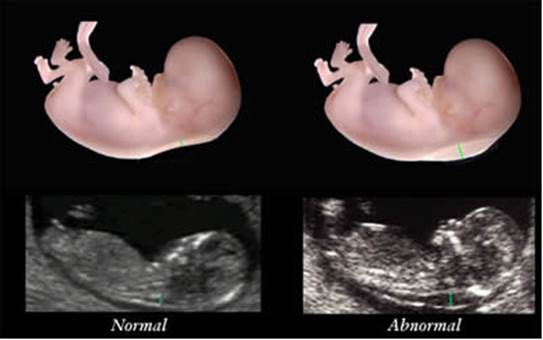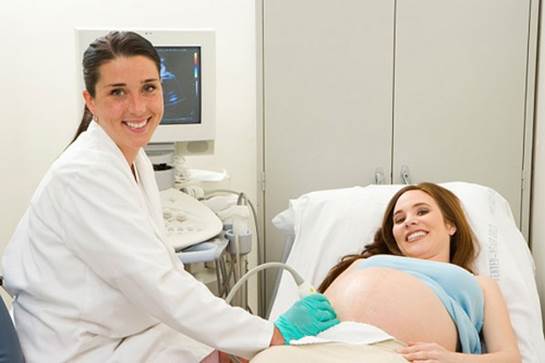Pregnant women are usually word of mouth
that in 11th-13th weeks of pregnancy, women have to take
nuchal translucency test to know if babies have the risk of Down syndrome. In
fact, do they understand clearly about nuchal translucency?
A usual set of chromosomes in human being
has 23 pairs including 22 pairs of normal chromosomes and 1 pair of sexual
chromosomes (XX is in female and XY is in male). If having one more chromosome
called trisomy, it will cause abnormalities. Most of the severe abnormalities
in chromosome lead to miscarriage; but if babies still live, they will bring
serious birth defects.

What
Do Pregnant Women Know About Nuchal Translucency Test?
Down is a syndrome of retardation of
psychomotor, often coming with other pathologies such as cardiovascular
diseases, nervous diseases, digestive diseases, bone and joint diseases; so
people have Down syndrome are burden for their family and social. Diagnosing
Down syndrome has to base on genetic cytology because 95% of these cases are
trisomy 21.2% of them are mosaic, and 3% are Robertson translocation.
Trisomy 18 - Edward syndrome - is the redundancy
of chromosome 18; children have expressions consisting of small head, small
jaw, kidney diseases, cardiovascular diseases, mental disabilities, low birth
weight, and two hands holding tight.
During pregnancy, development of prenatal
diagnosis will help us find early cases of chromosomal abnormalities, birth
defects in order to plan to terminate pregnancy if abnormalities are too
serious, or keep tract of to prepare for treating program immediately after
birth.
Diagnosing genetic abnormalities must rely
on chorionic villus sampling – CVS, amniocentesis, or tissue biopsy, which are
invasive procedures create risk of damage for fetuses, can cause miscarriage
and fetal infection. Therefore, a series of non-invasive methods used for
screening (not diagnoses) are taken to see whether each object is in groups of
high risk or low risk. If being in high-risk group, it is necessary to carry
out invasive procedures to make identifying diagnoses.

CVS
can be performed as early as 9 to 12 weeks of gestation - compared to
amniocentesis that is usually done at 1bout 15 weeks
Making non-invasive tests depends on fetal
age and combines with many other factors to increase screening value:
§ Nuchal
translucency is tested in the 11th-13th weeks of
pregnancy. Combine with mothers’ age and Double test to calculate the risk of
Down syndrome at babies in early period of pregnancy (usually in the first
quarter).
§ The
majority of cases that nuchal translucency is < 3mm are in low-risk group
(less risk of Down syndrome). If they are 3.5-4.4 mm thick, the rate of
chromosomal abnormality is 21.1%, and if they are ≥ 6.5 mm, the rate is up to 64.5%.
§ In
case that nuchal translucency is > 3mm, at the 16th-18th
weeks of pregnancy (maybe from the 15th-22nd weeks),
pregnant mothers will be conducted triple test (including alpha-fetoprotein,
hCG and unconjugated estriol). These tests are carried out to determine the
risk of Down syndrome, trisomy 18 and defects of neural tube. With the result
1/200, the risk of trisomy 21 is by 60% if mothers are under 35 or 75% if
mothers are over 35. With the result 1/100, the risk of trisomy 18 in babies is
99-100 times higher than those who having lower results. However, not all high-risk
cases mean abnormal fetuses.

Nuchal
translucency of fetuses is usually tested in the 11th-13th
weeks.